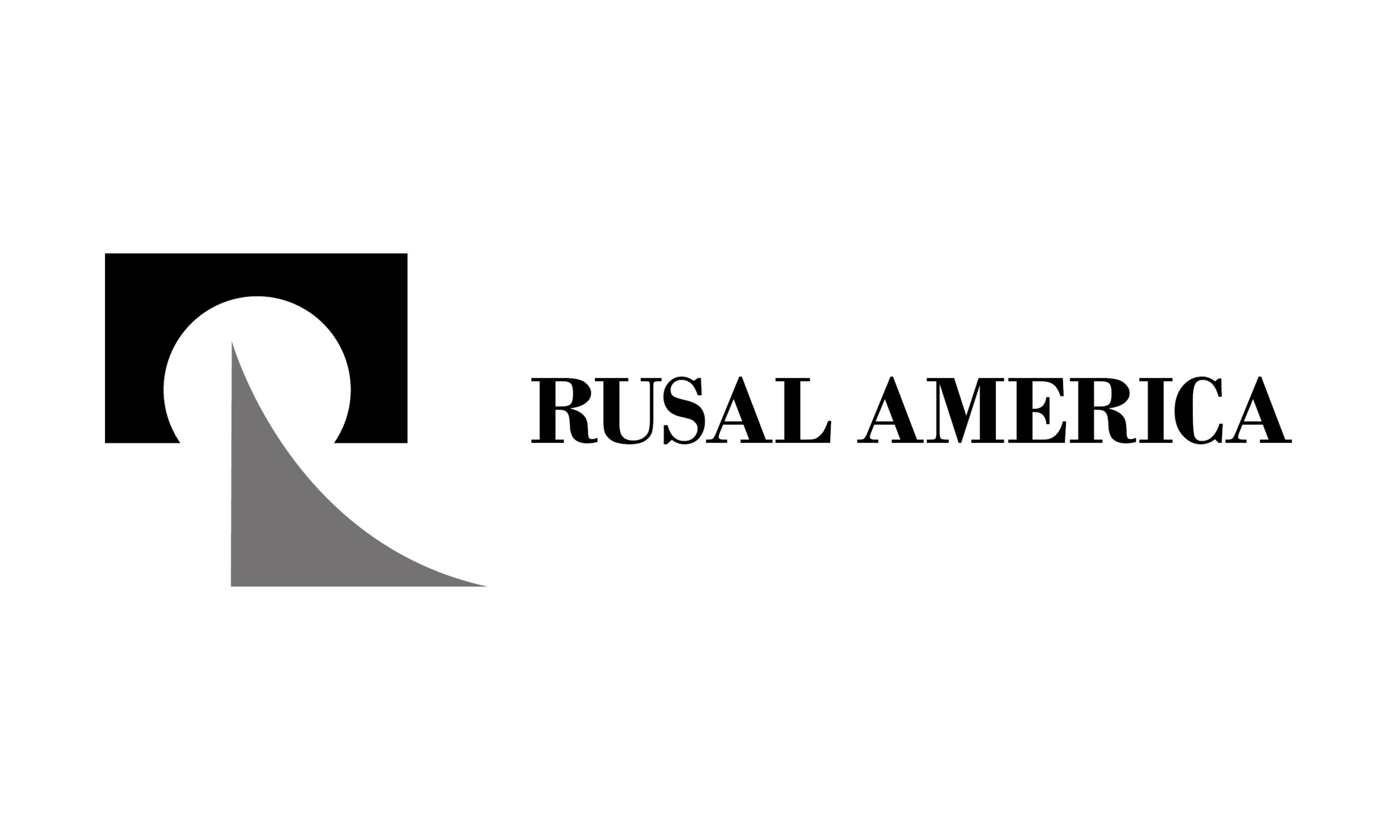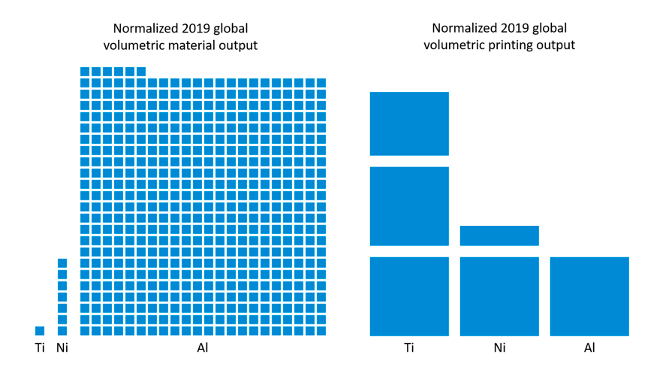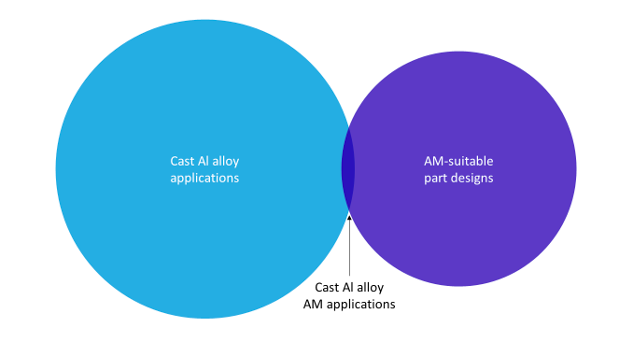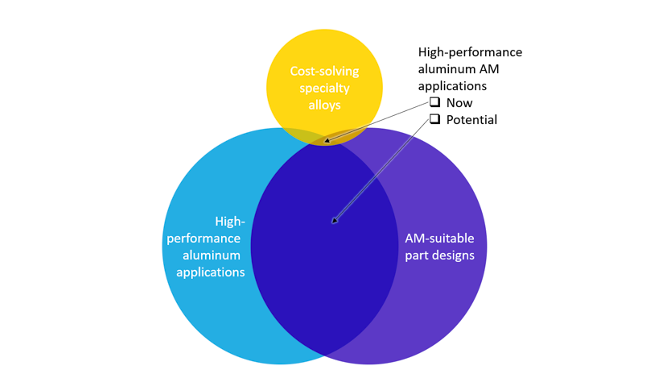
Rusal America’s Adam Travis will be speaking at 3DPrint.com’s upcoming AMS online industry summit (Feb 9-10, 2021). Register here.
At the risk of immediately alienating anybody who has built a successful business printing AM parts from cast aluminum alloys, I’m going to get right to it: Aluminum AM needs shaken-up (again). If you’re not too put off by my hot take, I’ll explain why I think that’s the case.
If we look at the arc of metal AM adoption by alloy family, according to SmarTech, we see that aluminum alloys are dead last when stacked up against titanium and nickel alloys. And that’s not because there are fewer things made out of aluminum in the world. In fact, according to the USGS, globally in 2019, aluminum production outpaced nickel by a factor of ~70 and titanium by a factor of more than 500. So why the difference then? How can aluminum be so ubiquitous but aluminum AM so under-utilized? To answer that we have to go back to when metal AM was first commercialized.

Fig. 1. Global material production ratios v. AM production ratios by alloy family. Material outputs normalized so that 1 ‘unit’ = total titanium material production. Printing outputs normalized so that 1 ‘unit’ equals total aluminum printing output.
In the early days of AM, industry was looking for existing alloys that they could point towards the technology. With titanium that leads you to Ti-64, with nickel you get 625 and 718, and with aluminum you’re left with cast alloys like AlSi10Mg. And casting and AM (specifically Powder Bed Fusion) are about as far apart on the physics spectrum as two metal melting processes can be. The problem then is that the overlap between applications for cast alloys and part designs that lend themselves to AM is too small. A good old Venn diagram illustrates the problem simply enough (see Fig. 2). There’s a large bubble for all of the cast aluminum alloy applications in the world and a smaller bubble for all of the parts that could be 3D printed from aluminum (note that not all of those parts are necessarily made out of aluminum today). And, in the middle, there’s a tiny sliver where the two overlap. That sliver is the entire AM market accessible to cast alloys. And while great things have been done in that sliver, aluminum’s potential is so much more.

Fig. 2. Cast aluminum AM application space. Am-suitability encompasses many considerations including design and production cost. Bubbles not to scale.
Which brings us to our first shake-up: High-performance aluminum AM alloys. For proof of how real aluminum AM’s potential is, just look at the number of companies that have gotten into the high-performance aluminum AM alloy design business in the past few years. I can think of 10 without cheating and looking at my notes. Clearly there is a mutual consensus that more can be done with aluminum AM. And the combined fruits of their labors have been truly exceptional, providing higher strengths and elevated temperature stability and enabling the creation of previously impossible part designs. Add on top of that the macro trends towards light-weighting and sustainability seen across industries, and aluminum looks even more promising. Yet, again according to SmarTech, there were less than 3 metric tons of specialty aluminum AM alloys shipped in 2019 (about 3% of all aluminum AM for that year).
Make no mistake, that number and market share will grow significantly over the next decade. But one may ask why it hasn’t grown faster? We could make any other number of Venn diagrams to show the overlap with alloy maturity, qualification procedures, industry awareness, design expertise, etc. But, by and large, the solution to all of those is time. So, I propose we instead focus on a factor that we can do something about: Material cost. Now we need a new Venn diagram with bubbles for high-performance aluminum applications and AM-suitable part designs plus a new third bubble for cost-solving specialty alloys. Our sliver between applications and part designs is a lot larger now (woot!). But the solution space is narrower than ever because of the addition of cost—a space accessible by only a handful of the most select, high-value applications. This will always be the case so long as premium properties carry premium price tags to match.

Fig. 3. High-performance aluminum AM application space. Bubbles still not to scale, in case anyone was expecting that to have changed.
Granted, cost will also improve some with time as adoption grows and economies of scale can be better leveraged. But this alone won’t be enough to usher in the wide-spread proliferation of these alloys needed to realize aluminum AM’s full potential. Which brings us to our second shake-up: Holistic alloy design. Specifically, high-performance aluminum AM alloys designed to prioritize not only properties and printability, but also material cost from the get-go. This is not to say that properties and printability should be sacrificed in the name of cost. In fact, it’s the opposite, saying that cost deserves equal weighting as an objective function to ensure that it doesn’t needlessly suffer in the name of the other two.
Holistic alloy design is nowhere more important than when ultra-high-value elements like scandium get thrown into the mix. As alloy design becomes ever more sophisticated thanks to the use of simulation and artificial intelligence to enable increasingly novel compositions to be derived faster than ever, so too should our expectations for the outputs of the process. It is no longer enough to state that the “best” alloy in a category is the one with the most impressive properties, but the one that can deliver those properties at a cost point that enables it to be widely utilized by industry. Innovation theory tells us that it’s not technological achievement that leads to proliferation, but cost accessibility. The first automobiles, for example, were a technological revolution available only to the select few. It was the advent of the Model T, the first cost-effective automobile, that ushered in their proliferation and eventual ubiquity.
That’s not to say that cost-effective high-performance aluminum AM alloys are automobiles nor that they’ll have a societal impact on the scale that the automobile did. But there is an ever-increasing amount of aluminum in cars. And with the advent of holistically designed, cost-solving specialty alloys there will be even more, along with a lot of the other products that move us and make up our modern world.
See how Rusal is leading the way in holistic alloy design to create the next generation of aluminum AM alloys.
Subscribe to Our Email Newsletter
Stay up-to-date on all the latest news from the 3D printing industry and receive information and offers from third party vendors.
Print Services
Upload your 3D Models and get them printed quickly and efficiently.
You May Also Like
3D Printing News Briefs, June 11, 2025: Sustainability, Automotive Tooling, & More
We’re starting with sustainability news in today’s 3D Printing News Briefs, as EOS has strengthened its commitment on climate responsibility, and Zestep is making 3D printing filament out of eyewear...
3D Printing 50 Polymer Stand-In Parts for Tokamaks at the PPPL & Elytt Energy
Of all the world’s things, a tokamak is one of the hardest, most complex, expensive and exacting ones to make. These fusion energy devices make plasma, and use magnets to...
3D Printing News Briefs, May 17, 2025: Color-Changing Materials, Humanoid Robot, & More
We’re covering research innovations in today’s 3D Printing News Briefs! First, Penn Engineering developed 3D printed materials that change color under stress, and UC Berkeley researchers created an open source,...
Firehawk Aerospace Partners with JuggerBot 3D, Gets $1.25M from AFWERX for 3D Printed Propellants
Texas-based Firehawk Aerospace, an advanced energetic materials firm that works with aerospace and defense applications, announced a strategic partnership with JuggerBot 3D, an Ohio-based large-format 3D printer manufacturer. Together, the...

































